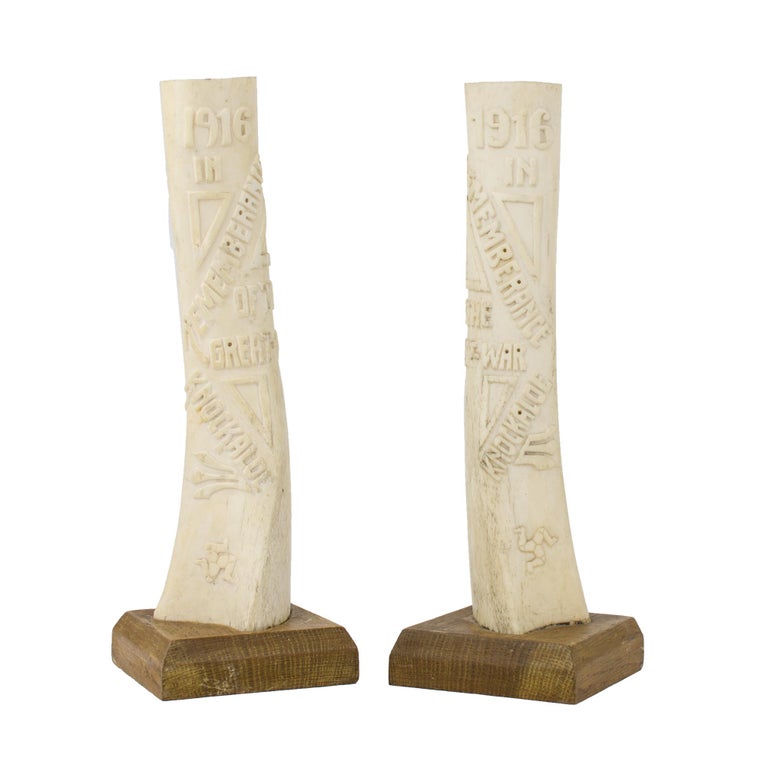
A pair of vases fashioned from the shin bones of domestic cattle by civilian internees on the Isle of Man during World War 1
The hollow bones (245 mm tall, and from 45 to 55 mm wide) are mounted in small wooden bases (approximately 90 × 90 × 25 mm). Visible on one three-dimensional surface is the following, carved in high relief: '1916 | In Remembrance of the Great War | Knockaloe'. The text runs variously straight across and diagonally left and right between three triangles and a trident, with the ancient 'three legs of man' symbol beneath it all. This 'triskelion', long associated with the Isle of Man, comprises three bent legs in armour, joined at the hip, running clockwise: it does look as odd as it sounds, but it is nothing compared to the frankly bizarre artefacts they are decorating here! The story of Knockaloe is fascinating. 'On 5 August 1914, the day after World War I broke out, the British Government passed the Aliens Restrictions Act, whereby the British Government could control the movement of "enemy aliens". General internment of all Germans of military age began in May 1915 following the sinking of the "Lusitania". The first 200 internees arrived on the Isle of Man in September 1914 for internment in Cunninghams Camp, Douglas, however following a riot in Douglas camp leading to the death of 5 internees due to overcrowding and the poor quality of the food, Knockaloe Moar farm, a former training camp for Territorial troops, was identified as and eventually became the largest internment camp of WWI. The first of the civilian male internees arrived on 17 November 1914 and ultimately the internees were of various nationalities including German, Austrian and Turkish. Knockaloe Camp ultimately held "nearly 24,000 prisoners in 23 compounds inside barbed wire, with 4,000 old soldiers acting as armed National Guard, and 250 civilians attending to their wants and comforts.... The camp at Knockaloe was three miles in circumference; 695 miles of barbed wire surrounded the compounds" (Samuel Norris: "Manx Memories and Movements")' (Knockaloe website). Feeding this vast population resulted in untold quantities of cattle bones; producing these hand-crafted artefacts was one method of keeping 'barbed-wire disease' at bay, and they 'were sold for the benefit of the internees by various Prisoner of War relief organizations, most notably that of the Society of Friends' (Imperial War Museum).
Item #115009
Price (AUD):
$550.00
